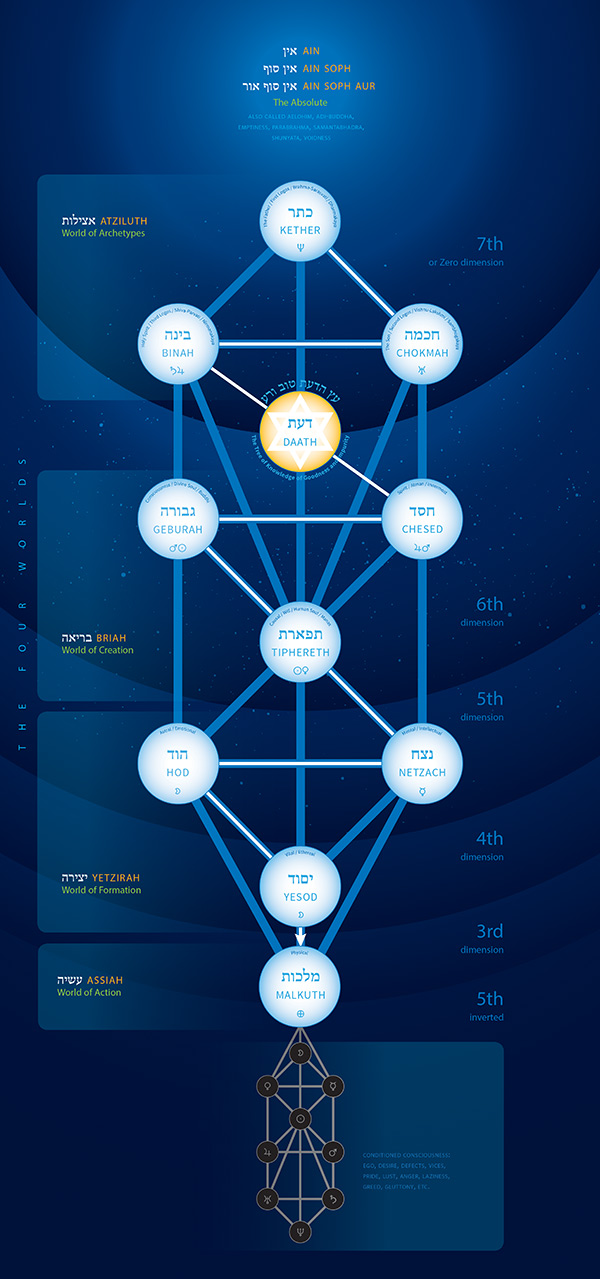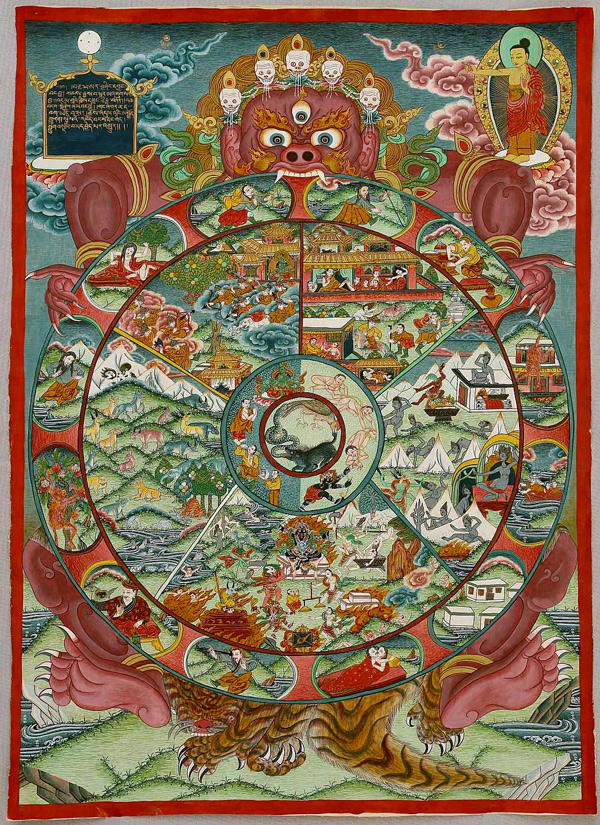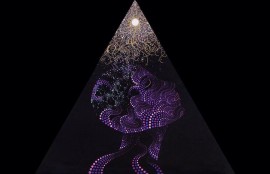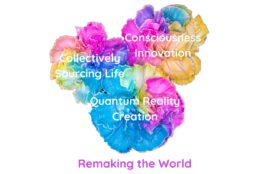The purpose of Meditation is to bring about change and to address our fundamental problems.
Real Meditation is based on facts, and focused on facts. Meditation is not really useful if it is just about beliefs and theories.
When we observe humanity and look at this world, we see a lot of problems, a lot of suffering, and much that seems impossible to understand or change. The amount of suffering that we see in humanity, that we see in the world, is truly overwhelming. Real Meditation provides a way to work on changing that.
For our spirituality to be really effective, it has to be based on practical facts and focused on dealing with suffering.
We need to be dealing with fundamental problems that we face, not only as individuals, but as a society. If our spiritual practice cannot solve some of these problems or at least understand them, then our spiritual practice is useless.
Genuine spirituality effectively transforms the individual, who can then help others.
We need to understand how to use our spirituality for the benefit of not only ourselves, but other people. That is the basis that we start from in this tradition.
It starts with observation of facts. Not beliefs, not theories.
Facts
Real Meditation and real spirituality begin with facts.
This first requirement is very difficult for some people. All of us have cherished beliefs, ideas, and theories, and we want life and spirituality to be certain ways. We all have religious or spiritual ideas, and ideas of who we are as a person, or how our culture is, or society. We have a whole huge collection of beliefs, yet in spite of our theories, beliefs, and ideas, we suffer.
If we really want to deal with our suffering, if we really want to change it, the first thing that we have to be willing to do is set aside beliefs, ideas, and notions that we have about ourselves and the world. We have to set aside everything that we cannot prove. Instead, we must resolve ourselves to deal only in facts: observable facts, repeatable facts.
If you think about this, and analyze this, you will realize that this forms a very powerful basis for your spiritual life. If you believe something and you cannot prove it, you could spend a lifetime believing in something that was not real. That is a waste of an entire lifetime. Wouldn’t it be better to take the approach that all the great teachers gave, which is to pursue only what you can prove through your own experience? All the great traditions have that in their scriptures and teachings, but people set that aside. People prefer to just “believe,” because it is easier, comforting, and requires no effort. Everyone wants to adopt a theory, belief, or way of behaving for their redemption, their salvation from suffering. However, they cannot prove that their beliefs will liberate them.
We prefer to deal in facts. (And yes, there are spiritual facts that you can prove through your own experience, but like any science, you must go step by step, scientifically, and set theories and beliefs aside).
So observation of facts is where we must begin if we want to develop an effective spiritual life and an effective Meditation practice.
This is the first important basis of effective Meditation practice: focus on the facts.
Consciousness
The second important basis is Consciousness. We need to know what the Consciousness is in ourselves, and how to use it from moment to moment.
To observe the facts means that we need to perceive them clearly. Consciousness is the basis of perception. If we cannot be in a position to observe a fact, than we cannot become conscious of it. This is a critical and important basis of any spiritual pursuit.
Consciousness is also the basis of genuine understanding. Once we perceive something, we can then begin to understand it. By understanding we mean comprehension, that type of understanding that is based on facts, repeatable, and absolutely without a doubt. For example, when you experience being cut by a knife, you have observed and understood that the knife can cut you. That is a comprehension, an understanding, that you will never forget because you are fully conscious of it. Similarly, that level of knowledge can be acquired about life, nature, spirituality, the mind, the world, God, etc. if we use the Consciousness in the right way.
This also means that if we cannot perceive something, we can never understand it.
So, Consciousness is the basis of perception and understanding. Therefore, we need to understand the Consciousness very well.
Any real spiritual life is based on working with Consciousness.
Every living thing has Consciousness in its level. Every atom, molecule, organ, structure, organism has Consciousness, it has life. It has the ability to perceive at its own level, and understand at its level.
So, factually speaking, we look at the facts of what we can confirm for ourselves about that. We know that plants respond to their environment. They can perceive. That means they have Consciousness at the level of a plant. Animals are the same; animals have Consciousness at the level of an animal. We do, too. We can perceive our environment, we can become conscious of things, we can become aware of things. So we have Consciousness at our level. But we do not realize that Consciousness is a force in nature that is infinite in its potential.
Everyone who pursues spirituality and religion has heard about masters, buddhas, angels, bodhisattvas — all kinds of superior beings. They are beings who have Consciousness at their level, which is different from ours. All of those superior types of beings were once human beings like us, but they expanded their Consciousness, developed it, perfected it, and became capable of things that we can scarcely imagine. We have the capability to become like them. That is why they gave religions to us. We are seeds, undeveloped, but with the potential to become something incredible like Buddha, like Jesus, like Moses, like all of those great teachers that we hear about, respect, admire, and long to understand. They were all once just like us: human beings with problems, human beings with limited perception. They worked with the facts of their lives to change their perception and become something greater. We all have that capability.
In the Buddhist tradition, that seed in us is called Tathāgatagarbha. That term can be interpreted in a few different ways, but what it really means is the embryo or the seed of a Buddha. It is the potential to become a Buddha. In modern translations it is called “Buddha nature.” We all have that potentiality in us, the inner nature that can become a fully developed human being if we know how to do it. In English, the fully developed human being has what is called soul. We have the potential to have a fully developed human soul. Those who really study the Bible will notice that Jesus did not say that we have a soul. He said “with patience you will possess your soul.” The true soul is something that has to be developed; we only have its seed. That seed is our Consciousness.
Meditation
Consciousness is the basis of learning Meditation.
Meditation is an act of Consciousness. Meditation is a state of Consciousness. Meditation is a type of perception.
Meditation is not a technique, it is not “spacing out” or daydreaming, it is not a way to avoid problems or avoid life. Meditation is not about having some type of sensational ecstasy with physical sensations.
Instead, real Meditation is a form of perception in which the Consciousness is awake, free of conditioning, utterly liberated, simple, happy, perceiving. Meditation is a conscious perception. All of us perceive through our eyes, nose, skin, ears, and tongue, but Meditation is not based in any of those senses; it is a perception with a different sense, with a different range and different power. We all have that, but it is latent, asleep, undeveloped.
Consciousness provides the seed, and Meditation is the state where it is fully activated.
Who We Are and Where We Are
Here are two maps of the Consciousness.

Poster of the Tree of Life.
The above image with these ten spheres arranged in particular pattern is called the Tree of Life. It is the basis of the Judeo-Christian tradition, but most people in those traditions do not know about this map because they have never been taught about it, even though it is in the Bible, and is the basis of everything in the Bible.
The Tree of Life represents levels of nature, levels that are around us and also within us. It represents who we are from top to bottom, and our relationship with nature and the Divine.
The same information is represented in the East by this image that is called Bhavachakra. Some call it the wheel of life or the wheel of Samsara, but the real name is Bhavachakra, which means “wheel of becoming.”

Both of these images represent the same thing, with a slightly different point of view. If we study them both and compare them with each other, we can learn a lot. Most people study these only in relation with the outside world or in relation with beliefs and theories, but the real meaning is about ourselves.
These graphics help us understand our state of being, what we can call our level of Being.
Who we are as a person? What are our characteristics? What are our qualities? Why is our life the way that it is? When we study these symbols they help us to understand who we are, and understand who we can become. That is why this one is called the wheel of becoming. It is meant to be understood that it is in motion, not still, not stagnant, fixed, and permanent, but constantly moving, constantly changing. It is a great wheel, and the motion of that wheel is produced by how we behave from moment to moment, how we use our Consciousness.
We have given many courses about these symbols. I am just introducing them to you today, so that you can get the idea; little by little we will talk more about them.
Both represent states of Consciousness, and the infinite capacity or potential of the Consciousness to be developed.
On the Tree of Life we see a stream of sephiroth (plural), which singular is sephirah; that word literally means “jewel, gem.” If you studied the Book of Revelation, you read about the Tree of Life and the beautiful gemstones that adorn the well-developed being.
The sephiroth represent levels of Consciousness, levels of potential development. They represent worlds or dimensions, and at the same time they represent levels of our soul, spirit, psyche, etc.
All of the beings that exist in nature, in all of the infinite universes, in all the infinite levels of life, from the sub-atomic to the macro-cosmic, are represented in the sephiroth.
The very lowest levels are what we can call the hell realms. Those external hell realms correspond to our internal hells: our subconsciousness, our hidden traumas, desires, lusts.
The lowest of the ten sephiroth is Malkuth, which means the kingdom, which Jesus spoke a lot about. That represents physicality, the physical world outside, and our physical body here and now.
Above Malkuth we see many more spheres; those are all superior levels. We can call them heavens or nirvanas, levels of existence that are just as real as this one, but more subtle. More refined. And a higher vibration of nature. Those heavens outside of us correspond to subtle, pure levels of the Consciousness inside of us.
All of us have experienced both the superior levels and the inferior levels, but we don’t realize it. We experience them through our dreams. All scriptures are full of stories about people being out of the body and going here and there. They have different visions and experiences. There are stories about people traversing the lower worlds, like The Divine Comedy of Dante. All of that is mapped here on this image.
All of those levels of existence are inside of us. They are all within our psychology. Those hell realms are our infra-Consciousness, our unconsciousness, our sub-Consciousness. When we have a nightmare, we are in our own hell realms. We are experiencing those submerged worlds there inside of us. That is where we find our anger, fear, lust, envy, greed, gluttony, all those qualities that make us suffer. They are inside of us. Those are mapped here on this image.
Superior to that, above the physical body, are all the heavens, the virtues, the beautiful qualities that our Consciousness has, like generosity, patience, conscious love, the ability to sacrifice for others, diligence, the ability to work hard. All of the virtues that are naturally part of free and unconditioned Consciousness are represented in that part of that image.
We find the same represented on the bhavachakra. This great wheel represents the same realms, just in another way. The lower realms are the inferior worlds, and the superior realms are above.
These symbols represent our psychological state.
Levels of Instruction
What I am describing has been taught for centuries. We are not saying anything new. But the way that it is taught has varied over the centuries and according to the level of teaching that the student has had access to.
Most people who study Meditation and spirituality today only know about the superficial, public levels. We can call that the introductory level of the teachings. In Buddhism they have good words for this: Sutrayana or Shravakayana, which refer to a public level of teaching that you can hear about easily. You hear about it from your friends and family, you read about it in books as well. Nowadays you can hear about it on the internet and TV. All that type of material is easy to get and is fairly commonly known.
These symbols and structures are taught in the introductory levels of instruction. If you go to any Buddhist monastery you will find images of this wheel and images like this one that relate to Meditation. It is very easy to find because it is an introductory level of instruction.
It is very easy now to find Meditation instruction, books, videos, classes. And because it is so common now, everybody thinks they know what Meditation is, because they have experienced the introductory aspect of it.
The public level of spiritual instructions are “exoteric.” That means externally available, publicly available, easy to find. But that is not the sum total of what Meditation is, or what spirituality is. To think that Meditation is only what people say about it in the cafe or on the street corner would be the same to think that by knowing how to take your pill for a headache, now you know everything about being a doctor. That would be absurd! Yet, that is how it is with Meditation now: people who only know basic things now think they are experts. In reality, Meditation is a very deep, very precise science.
The second level of instruction can be called intermediate or mesoteric. In Buddhism it is called Mahayana, the “greater vehicle,” which is a step above the introductory vehicle. This is a type of instruction that you generally get once you have already developed some ability with the introductory techniques, the introductory teachings.
The third level is the esoteric or protected level. In Buddhism they call it Tantrayana, Mantrayana, Vajrayana, etc. Traditionally, this level of knowledge is given only to those who have the skill to handle it effectively, thus they must have proven their abilities first.
These three levels exist in every religion, historically speaking. They have been called:
- Public • Apprentices • Laity • Sutrayana
- Private • Fellows or Workers • Elders • Mahayana
- Secret • Masters • Priests, Priestesses • Tantrayana
Nowadays most religions and most traditions have lost the differences between these structures, and in fact discarded or lost a lot of the knowledge they once had.
In our tradition we study and teach all three of these levels.
Our central interest is in how they are practical. We have no interest in debate, in theory or belief. None. We don’t care what you believe. Beliefs make no difference. It doesn’t matter what we believe or what theories we have. What matters is how we use our Consciousness from moment to moment: that creates our quality of life. That creates our level of Being.
When we study and teach Meditation here, we use all three of these levels, because they are important. And, they are different from one another.
The Introductory Level
In the Sutrayana level, the introductory level, the student learns basic ethics, basic concentration practices, relaxation practices, breathing exercises, perhaps some prayers and mantras. It is a simple, practical, and limited range of tools designed to help the student reach a stillness and serene way of being, which is essential in order to go on to more significant techniques.
In this first level of instruction generally what a person learns is how to stabilize themselves psychologically, how to become calm, how to become serene, how to develop equanimity. So they learn practices like how to concentrate, how to relax, how to observe. These are essential. They start the process of learning Meditation. Every meditator needs to know those things. They also learn what causes the mind, the Consciousness, the heart, and the body to have tension, disequilibrium, to be imbalanced, in pain, to be suffering.
In the introductory level, students also learn ethics, or also known as karma, or even better, cause and effect.
The person in the introductory level of instruction learns how their behaviors lead to consequences; specific actions always lead to pain, discontentment, tension, etc. It is very much concerned with our own liberation, our own behavior, and individual state of Being.
Traditionally, when a student had already learned through experience about how their actions create suffering, and had started to change by modifying their behaviors, they could then be introduced to the next level of instruction (if available).
The Intermediate Level
The second level of instruction is concerned more about other people, not about oneself. It is more concerned with reducing the suffering of others.
The second level of instruction (Mahayana) is based on the understanding developed in the first level; having seen through the first level of training how our own behaviors create suffering, we now understand that everyone else suffers in the same way. Moreover, our behaviors make others suffer, too. Therefore, the student begins to shift focus away from their own benefit and personal liberation, and towards changing one’s own behavior in order to benefit others. This level is where the virtues start to really emerge in a person, where altruism, generosity, love, and patience become more engaged, and self-interest is weakened.
Traditionally, when a person was seen to be really seriously working in that way, actually living it, they could then be introduced to the advanced level (if available).
The Advanced Level
The third level of instruction is called Tantrayana, Mantrayana, Vajrayana, and other names in Buddhism. It is a level of instruction that was protected, isolated, and for good reason.
Those who were flourishing in the second level of instruction, truly abandoning self-interest and instead living for the benefit of others, could then be introduced to more expedient, effective, powerful methods to expand their capacity for altruism and their spiritual abilities even more.
The Purpose of the Three Levels
So if you look at these three levels, you see a shift of focus.
In the beginning, we are all very much concerned about ourselves, like we all are now. All of our attention, effort, and energy is about “me, myself, my suffering, my life. I want this and I don’t have it. I have this problem and I want to get rid of it.” It’s all about “me.” That is the state of humanity. It is all about “I.”
Real spirituality and real Meditation guides the person to the practical facts, to learn that when you take attention away from yourself and become more mindful and attentive to the needs of others, not only do you help other people, but your own suffering reduces. You realize that the things that you thought were so important, so painful, and awful in your life, really have no meaning at all in comparison with the suffering of others. Truly, other people suffer far more than we do. By becoming cognizant of that, and contributing towards changing it, our spiritual life changes dramatically.
That shift in attitude is the essential point of these three levels. Each level provides the tools to help a certain mentality and perspective. Each level is important, and has its place.
Some people see these three levels and think, “I want to skip all that beginning stuff and get right to the secret teachings. I want to go straight to the esoteric knowledge and skip all that boring, beginner stuff.” Those people are foolish, arrogant, and will only create suffering for themselves and others.
These three levels function as one. They form an essential structure. For our spiritual life to succeed, we need training in all three levels.
Here, we train students in all three levels simultaneously. Time is short. Humanity does not have time now to train for lifetimes, and gradually move through the three levels. The doors have been opened to receive deep training. It is not easy for everyone, but at least the chance is there for those who want it.
The Levels of Meditation Training
In accordance with the principles of the three levels of instruction, the practice of Meditation also has three levels.
In the introductory level, alongside learning ethics (which requires constant awareness of oneself), the student learns to relax and concentrate. This stabilizes their psychological state. In terms of Meditation practice, they only learn concentration, such as to repeat a mantra, observe the breath, pray to a Deity, repeat a prayer, stare at a symbol or point, etc. All of these are preliminary exercises to concentrate attention, which are necessary.
In many traditions, in the beginning level, the students are told to strictly avoid imagination, because they need to learn concentration first.
In the next level, the intermediate level, in some traditions we see that students begin to be taught how to use imagination as part of their Meditation practice.
Then in the advanced level, the imagination becomes more important. Here, concentration and imagination are united completely, where they are known by the names Shamatha and Vipashyana (calm abiding and insight).
Here, we guide students through all three levels.
Concentration and Imagination
At the most basic beginning level, we teach students how to concentrate, become serene, have meditative stability, which is the concentration aspect. We also teach how to harness the other power of the Consciousness, which is to perceive, not just through your physical senses, but through your imagination.
This word imagination has a bad reputation nowadays. We think that imagination is not real, or something fake. But it is not.
A few centuries ago some people that were studying this type of material wanted to keep it secret, so they invented a new word to hide that they were studying imagination, so they called it “clairvoyance.” That means “clear seeing” in French. Clairvoyance is imagination. It is the same thing. In Sanskrit, it is Vipashyana, which simply means insight.
In our modern culture we look down on imagination, but at the same time, we are mystified by people like Beethoven, Michelangelo, Leonardo da Vinci, Einstein. Do you know how they did what they did? Everyone of them said it: the power of imagination. Do you know how the great artists created their creations? They closed their physical eyes and they looked with their internal eyes. Right now most of us, when we close our physical eyes, we see nothing. But there is a sense there.
When we were children, we had that power of imagination in abundance. We could immediately imagine up whole worlds and big stories, huge epic dramas that we would play in. We were so happy engaged in that activity, because we were using the power of the Consciousness, but of course, as a child would use it. But here is the key: that same power of the Consciousness is what a master or a Buddha uses to investigate phenomena in nature. It is the exact same tool, but instead of being at the level of a child, it is at level of a Buddha. We have that skill. We just need to develop it.
So that’s what we teach: how to utilize concentration in combination with imagination. When you unite them, you can access a doorway inside yourself. That door is called Meditation. That is a door through which you can perceive beyond the physical senses. It is not imaginary. It is not fantasy. It is not fake. It is real. It is inside of every living thing. We have just conditioned ourselves so deeply in bad habits that we have lost ability to do it. We can recover that.
Prajna: Profound Wisdom
The state of Meditation gives us access to profound wisdom or insight, what in Sanskrit is called Prajna. That word loosely translated means “wisdom.” More accurately, it is knowledge (-jna) that is superior (pra-) or beyond the common level.
Prajna is a very profound type of knowledge. It’s something that is far beyond the clever quotes and platitudes of a so-called wise person. This word is in Sanskrit called a Paramita, which means a “perfection.” It is a quality of a Consciousness. It is a quality of being.
When you study, for example, the teachings of Jesus, Buddha, Krishna, Padmasambhava, Milarepa, Moses, Solomon, or any of the great teachers, you see their profound wisdom. The only thing Solomon wanted from God was wisdom. When he received that gift of wisdom, it was Prajna, wisdom, which in Hebrew is the word Chokmah, a sephirah at the top of the Tree of Life. Chokmah is a quality of Consciousness, a type of perception that sees reality. It is not confused. It does not become filtered by anything in the mind. It sees what truly is. It is the perception of a Buddha, master, prophet, angel.
Prajna / Chokmah is the type of perception that allowed the Buddha Shakyamuni to understand the causes of suffering and then teach others about it.
Prajna / Chokmah is the type of wisdom and perception that Jesus had, when he was capable of cutting through the incredible difficulties that he faced, and help so many people. Likewise, it is the same in the case of Krishna, Moses, etc. All of them had this profound perception about reality.
We have the potential to access that in ourselves. To reach it, we need to utilize Samadhi.
Samadhi: Ecstasy
This term Samadhi can be interpreted in many ways, but what it essentially means is a state of Consciousness that is not conditioned by any ego, any psychological defect or obscuration. In other words, it is a state of nirvana or liberation, where we as a soul, Consciousness, Buddha nature, are completely unconditioned, not affected by anger, fear, pride, etc. We experience our true nature, liberated.
When you learn to meditate effectively, you can experience that. It is a state of being, a state of Consciousness, and there are levels of Samadhi.
To reach Prajna, profound wisdom, is only possible through Samadhi, through the Consciousness being extracted from conditions, especially from our defects. The Consciousness can only comprehend reality, the truth, if it is first extracted from the defects and flaws that filter our perception. If our perception is influenced by anger, pride, lust, etc, it is impossible to see the truth, the reality. That liberation from defects can be temporary (such as for a moment in our Meditation practice) or can be made permanent (by destroying all the defects we have within).
Removing Conditions
The Tree of Life represents our physical body at the bottom (Malkuth). Our Consciousness, which descends from our Inner Being, is here and now in our physical body. We are here, perceiving, consciously.
We are conscious of listening and studying this material, but our Consciousness is conditioned by the physical body, by the five senses.
Furthermore, it is also conditioned by the psychology that we have right now, by our mood, by the tendency of the mind to think, and be distracted, by emotions that may be surging in us. We may feel fear, anticipation, excitement, or any number of emotional qualities that condition the Consciousness. Every layer of conditioning limits the ability of the Consciousness to perceive the truth. Every conditioning filters our perception. If we came to the lecture feeling angry, we would hear and see everything through the anger. If we came to the lecture feeling scared, maybe we have a situation in our life that’s causing fear in us, we feel that fear or anxiety all the time, we would only hear the lecture through the fear. We would not hear the lecture as it is truly given, but instead we would only hear how the fear interprets what it hears. Our perception would be conditioned. That is not a state of Samadhi. It is a state of conditioning.
To learn to meditate means to learn how to take the Consciousness out of all that conditioning.
Here is how you do it: we do not chase Samadhi or try to provoke it. Instead, we focus on removing that which prevents it. When the limiting conditions are removed, Samadhi happens automatically, spontaneously, effortlessly.
Anyone can do that. But to do it you have to see the conditioning. You have to be able to recognize it for what it is, and then move your attention away from it.
If you are feeling angry or frustrated, you have to be able to see that anger and say, “OK, I feel angry, I am just going to relax and let it go.” If you do truly relax, the anger will subside. It does not cease to exist, but it does cease to condition your perception for the moment.
The same applies to any other conditioning factor, including the physical body. We have to become very aware of the body, then extract the Consciousness from it, but leaving it be and not paying attention to it. Then we do the same with the psyche that conditions our perception. If we learn to do that very effectively, the Consciousness can be taken out of all that conditioning and thereby experience reality: the sephiroth above Malkuth, what we can call “nirvanas” or “heavens.” The experience may not be something like seeing angels and Buddhas. It may be as simple as a powerful feeling of being free, happy, content, and serene, but an undeniable happiness, which — incidentally — is the natural, unconditioned state of our Consciousness.
When the Consciousness is liberated from conditioning, it is perfectly serene. Spontaneously, naturally, on its own. It is happy. It is joyful, it is loving, it is patient. It has all of those virtues in it. That is its natural state. To be stressed, angry, tensed, and fearful is unnatural.
So, the Meditation technique that we learn is not to force the mind to be quiet or to impose upon it some type of fake serenity. Instead, we recognize all the conditioning factors that prevent the natural state, and extract ourselves from them. When the process is thorough, the Consciousness is liberated spontaneously, naturally, automatically, by itself, without any effort. Without any exertion.
So, in this sense, we can say that Meditation is actually really easy. It is just a matter of learning how to relax physically and psychologically. That is how we can access Samadhi.
We call Samadhi “ecstasy,” because it is an ecstasy of the soul, the heart, not the body. It is an ecstasy of the being of who we really are.
We can also call Samadhi “Eden,” which is a Hebrew word that means “bliss.” In the Bible, Adam represents the primordial, pure state of the Consciousness, happy and content, capable of seeing the divine. Through desire, that state was lost.
We reach Samadhi — return to Eden — through Sila.
Sila: Ethics
These three terms Sila, Samadi and Prajna are the Three Higher Trainings of Buddhism.
Sila is ethics. The reason our mind is in the state it’s in, the reason we suffer, is because of our behavior. Sila, ethics, is how we change it. Samadhi is the result. From Samadhi, we can then acquire Prajna, wisdom.
If we really want to experience the ecstasy of the soul, to really know what Meditation is as a state of Consciousness, we can. Eden, Samadhi, ecstasy, is the natural state of the Consciousness. We do not experience it because our behaviors prevent it.
Anger is a simple example. When you become angry, your whole way of perception is filtered by that anger. Everything you see, hear, think, and feel is dictated by the anger. Anger is a conditioning factor; it causes suffering. We suffer, and then we want others to suffer, too. That is a lack of awareness. It is a state of conditioning that causes pain. When we are in that state Samadhi is impossible, and so is wisdom, Prajna. When we are conditioned by anger we cannot see the reality. The same is true of all these other qualities that we all have in abundance: pride, envy, jealousy, fear, lust, gluttony, avarice, etc.
We all have all of that, a lot of it. That is why we suffer.
If we learn to observe the facts of our behaviors, start dropping harmful ones, and adopting beneficial ones, we can change that situation. We can turn it around. So, ethics is the doorway to Meditation.
Sila means “tendency, habit, custom, way of living or acting, shape, usage, virtue or practice.”
There are a lot of ways to interpret Sila. I do not use the word morality here, which is how many people translate it. Morality is completely subjective. What is moral in this country, may be immoral in another country. What is moral in this culture, may be immoral in another culture. What people in this group over here consider moral may be considered immoral by us. So morality and immorality are completely subjective and have nothing to do with the laws of nature.
Ethics on the other hand are objective; they are universal. Violence is harmful. Anger is harmful. This is universal. Selfishness is harmful. This is universal. So this is what we mean by ethics.
How to Begin the Path to Meditation
Sila is about learning our tendencies, habits, customs, ways of living, recognizing the ones that cause us to suffer and others to suffer, and starting to change them. That is how we learn to start meditating.
So the first thing is to start watching ourselves, all the time, and be honest with ourselves about what we see in ourselves.
At the same time, we also begin to use techniques to start settling ourselves down, to relax and concentrate.
This image provides us with a map that guides us in our efforts to learn how to concentrate. This is for preliminary concentration practice. For the rest of the course, we will study it.

The above painting is visible in Tibetan Buddhist monasteries all over the world. All of the practitioners of Tibetan Buddhism learn this map. It outlines in a visual way the process of learning to calm down, relax, concentrate, and have serenity.
There are nine fundamental stages.
At the beginning of this path, at the bottom right we see a monk chasing an elephant who is pulled by a monkey. That scene represents the psychological state of a beginner. The animals represent our mind, which is out of control, running after desires. The elephant represents the heaviness and dullness of our mind. The monkey represents that fickleness and flightiness of the mind that will never sit still, but is always jumping from one distraction to another, all the time. Observe your thoughts: can you stop them? By learning how to meditate, you learn how to have a mind that is empty of thoughts. Then, there is serenity, peace, and a beautiful contentment.
If we are serious about changing our life, we have to chase after the elephant and the monkey, and catch them. That is what we do through our preliminary practices.
This information was originally published on gnosticteachings.org. You can find more lecture transcripts by visiting them online.























Sorry, the comment form is closed at this time.